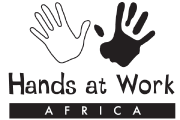Hector Pieterson became the subject of an iconic image of the 1976 Soweto Uprising when a news photograph of the dying Hector being carried by another student while his sister ran next to them, was published around the worldWhen high school students in Soweto started protesting for better education on 16 June 1976, police responded with teargas and live bullets. It is commemorated today by a South African national holiday, Youth Day, which honours all the young people who lost their lives in the struggle against Apartheid and Bantu Education.
In 1953 the Apartheid Government enacted The Bantu Education Act, which established a Black Education Department in the Department of Native Affairs. The role of this department was to compile a curriculum that suited the "nature and requirements of the black people." The author of the legislation, Dr Hendrik Verwoerd (then Minister of Native Affairs, later Prime Minister), stated: "Natives [blacks] must be taught from an early age that equality with Europeans [whites] is not for them." Black people were not to receive an education that would lead them to aspire to positions they wouldn't be allowed to hold in society. Instead they were to receive education designed to provide them with skills to serve their own people in the homelands or to work in labouring jobs under whites.
An excerpt from 16 June 1976 Student Uprising in Soweto
Some would argue that very little has changed in the last 35 years regarding the standard of education provided for children from a disadvantaged background: "The Apartheid system produced exactly what was intended. It was designed to produce illiterate black people. It’s no wonder that today we have vast numbers of people who cannot read and write." – The Dinokeng Scenario
The schools in poorer communities mirror the legacy of the Apartheid education system, in spite of government’s commitment to equitable education. Nearly half of all schools, most in poor communities, have extremely poor infrastructure: 79% have no libraries, 60% have no laboratories and 68% have no computers. The problems of access to education in poor communities are compounded by malnutrition and the impact of HIV/AIDS. A study in 2003 showed that 7% of children were “often or always hungry” and that 17% were “sometimes hungry”.
An excerpt from The Dinokeng Scenorio report
As South Africans take a day to remember 16 June 1976, we urge you to pray with us, from wherever you find yourself in the world, for the futures not only of South African children, but children throughout sub-Saharan Africa.
Hands at Work is committed to caring for 100,000 children in sub-Saharan Africa. We say a child is not cared for unless (s)he has received three basic services: food security, basic education and health services.
Let's fight for our children!
